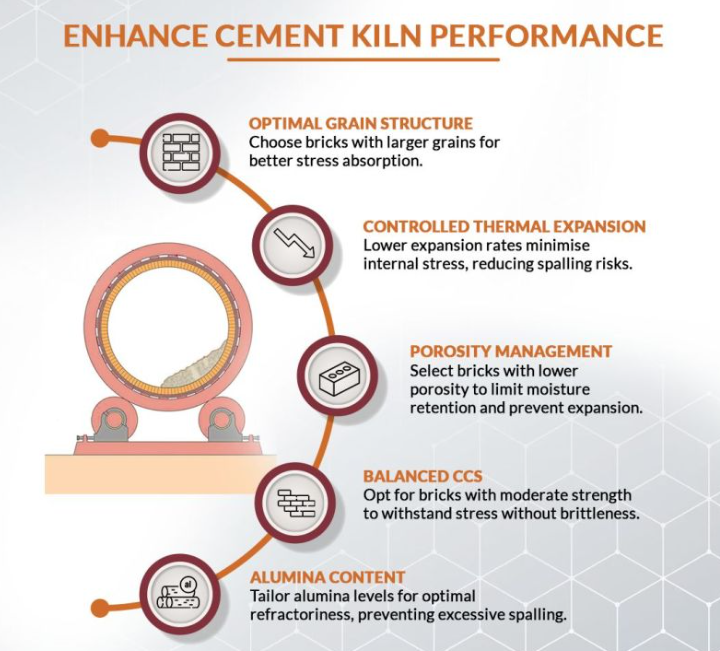Contents
Enhance Cement Kiln Performance: Combat Spalling with Smart Material Choices!

TO Download this post and all the books and excel sheets and my personal notes and presentations I collected about cement industry in the last 30 years click the below paypal link
Maximizing kiln efficiency is crucial for maintaining productivity and reducing operational costs in cement production. A key factor in ensuring optimal performance is the selection of the right refractory materials. By making informed choices about the materials used in your kiln, you can significantly reduce spalling and enhance overall efficiency. Let’s explore how you can optimize your cement kiln performance with smart refractory choices.
1. Optimal Grain Structure
Choosing the right grain structure for your bricks is essential. Bricks with larger grains have better stress absorption capabilities, which is vital in the high-pressure environment of a cement kiln. The optimal grain structure helps in distributing stress more evenly across the brick, reducing the likelihood of cracks and spalling.
2. Controlled Thermal Expansion
Thermal expansion is a common cause of internal stress within the kiln. By selecting bricks with controlled, lower expansion rates, you can minimize these stresses. Lower thermal expansion reduces the risk of spalling by maintaining the structural integrity of the refractory lining under fluctuating temperatures.
3. Porosity Management
Porosity plays a significant role in the performance of refractory bricks. Bricks with lower porosity levels help in limiting moisture retention, which can cause expansion and lead to spalling. Proper porosity management ensures that the bricks can withstand the kiln’s harsh environment while maintaining their strength and integrity.
4. Balanced Cold Crushing Strength (CCS)
Cold Crushing Strength (CCS) is another crucial factor to consider when selecting bricks. Bricks with moderate CCS can withstand the kiln’s operational stresses without becoming brittle. A balanced CCS is key to preventing material failure and ensuring that the kiln operates efficiently over time.
5. Alumina Content Tailoring
The alumina content in your refractory bricks determines their refractoriness. Tailoring the alumina levels to suit your specific kiln conditions can prevent excessive spalling. Optimal alumina content ensures that the bricks remain durable and effective throughout the kiln’s operation, maintaining high performance even under extreme conditions.
Conclusion
In conclusion, enhancing your cement kiln performance is all about making smart material choices. By optimizing the grain structure, controlling thermal expansion, managing porosity, balancing CCS, and tailoring alumina content, you can significantly reduce spalling and boost the efficiency of your kiln. Invest in the right refractory materials today to see long-term improvements in your cement production process.
TO Download this post and all the books and excel sheets and my personal notes and presentations I collected about cement industry in the last 30 years click the below paypal link
